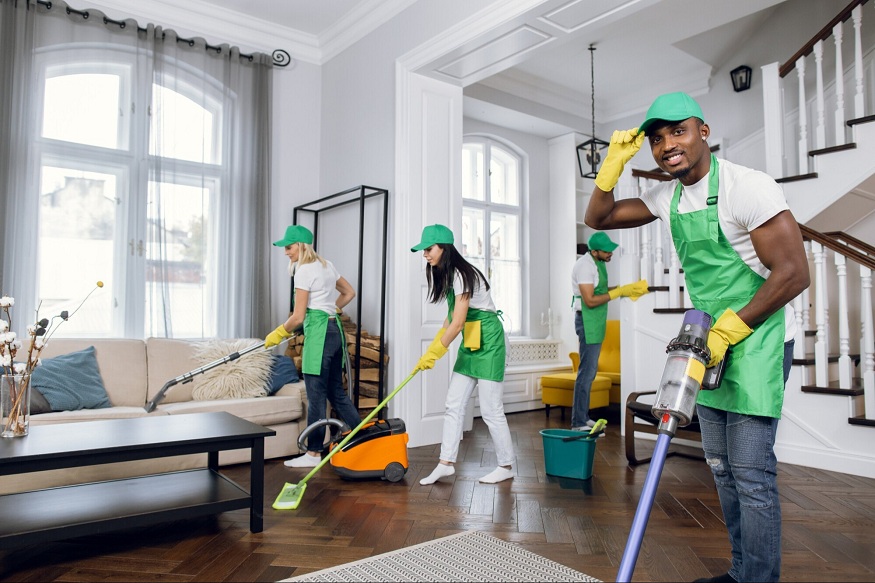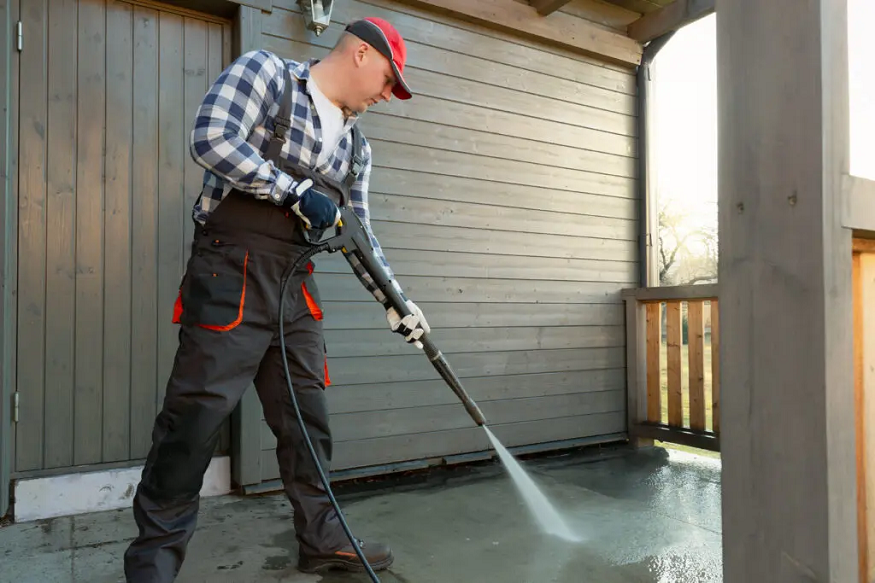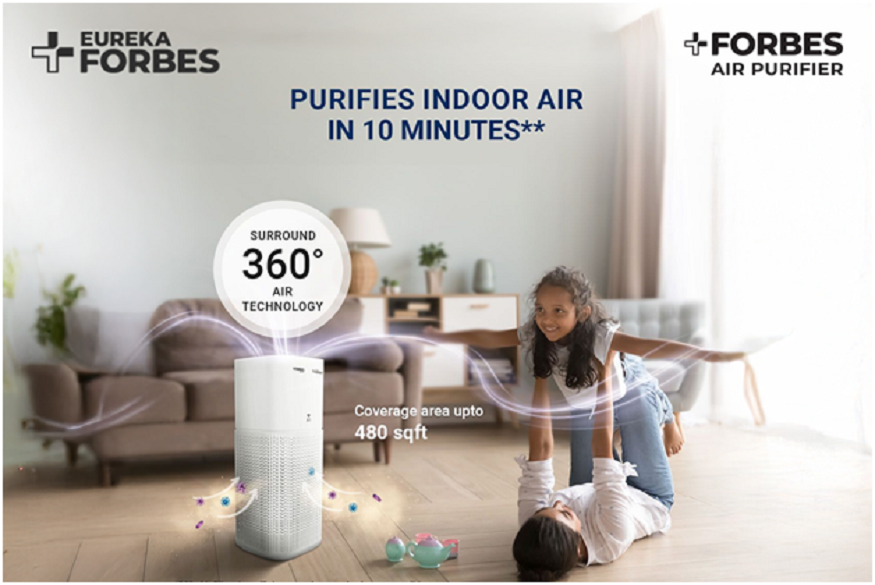Ever notice how vinegar and baking soda always seem to pop up in DIY cleaning hacks? That’s because each of them is a powerful, eco-friendly cleaner that can handle pretty much everything from scrubbing sinks to freshening up laundry.
Let’s explore some clever ways to put them to use around the home, so they can make your life easier when you clean.
Before You Start, Avoid This Popular Cleaning Mistake
Vinegar and baking soda are powerful cleaners on their own, but actually, there’s a common misconception about mixing them together being effective.
Actually, when you do that, the chemical reaction, which causes the “fizzling”, actually cancels each other’s cleaning properties.
As vinegar is an “acid”, and baking soda is a “base”, the result creates “salt water”. And, if you’re wondering, this isn’t very good at cleaning anything.
So, now that you know that, let’s explore vinegar and baking soda’s individual superpowers.
Vinegar cuts through grease easily and dissolves stubborn mineral deposits, while baking soda’s gentle grit scrubs surfaces clean and soaks up bad smells.
Also, never mix vinegar with bleach or other strong chemicals. What you get isn’t a super cleaner, but a dangerous reaction you don’t want in your home.
Lastly, if your skin tends to dry out, slip on a pair of gloves to keep it comfortable. Crack open a window or switch on a fan while you’re scrubbing so the air stays fresh. And when you’re done, store your solutions somewhere safe and out of reach of kids and pets.
You’re now ready to begin cleaning your home.
Assemble Your Eco-Friendly Cleaning Kit
Surprisingly, getting started with eco-friendly cleaning doesn’t take much. You just need a few basics that can cover nearly every chore.
Here’s what’s worth having on hand:
- Vinegar. White or apple cider variants do an equally effective job. They cut through grease and wipe away stubborn marks with ease, and you’ll find them on almost any store shelf, ready when you are.
- Baking soda. The go-to for tackling stains and neutralising smells, all while staying gentle on your counters, sinks, and more. It also helps that it’s quite cheap, too.
- Reusable spray bottles. Perfect for mixing your own solutions and cutting down on single-use plastics. They make it easy to refill and reuse, so you’re reducing waste every time you clean.
- Microfibre cloths. These beat old rags by a mile in terms of efficiency and durability. They grab onto dust and bacteria, hold up after countless washes, and leave your surfaces streak-free.
- Old brushes. Don’t toss out that worn toothbrush or spare makeup brush—they’re perfect for scrubbing awkward corners, grout lines, and any tricky nooks you can’t reach otherwise.
Most of these can be picked up locally, but if you stock up in bulk, you’ll save money and cut down on packaging at the same time. It’s smart for your budget and kinder to the planet.
Create a DIY Multi-Purpose Cleaner in Minutes
A quick mix of vinegar and water delivers a cleaning powerhouse with minimal effort. It’s tough where it counts but gentle enough to keep things looking their best.
Simply mix equal parts vinegar and water. Pour them into your spray bottle, give it a shake, and you’re set.
Next, grab a marker and label the bottle clearly. No one wants mystery solutions floating around, especially in a home with kids or pets. Once that’s done, tuck it away somewhere safe.
How and Where to Use the Cleaner
Now that you’ve got your supplies ready and your cleaner mixed up, it’s time to see what these two simple ingredients can really do.
Just one quick tip before we dive in: always test a small hidden spot first. Every surface is different, and this little step makes sure you won’t run into any surprises.
Countertops
Give your counters a good spray with your vinegar mix and let it sit for a few minutes. This gives it time to break down grease and everyday mess. Wipe everything clean with a microfibre cloth, and if you spot any stubborn stains, call in backup.
Mix baking soda with a splash of water to form a paste, spread it over the spot, and scrub gently. You’ll see the buildup vanish without a trace.
Glass
For mirrors and windows, spritz on the vinegar solution until the surface is lightly coated. Then, polish with a microfibre cloth or run over it with a squeegee.
The result? Crystal-clear glass without the chemical smell—a win for households with kids and pets in particular.
Sinks and Bathrooms
Spray the vinegar solution across sinks, taps, and bathroom surfaces, letting it sit long enough to loosen dirt. A quick scrub with a brush will take care of most grime.
If you notice mould or soap scum clinging on, that’s where baking soda paste comes in. You simply mix the powder with water until it reaches a thick consistency.
Spread it over the problem areas, scrub carefully, and rinse away the residue. Vinegar does the daily work, but baking soda is the reliable sidekick for the tougher jobs.
When DIY Isn’t Enough
Sometimes, life’s too busy or the mess is simply too much for home remedies. In those moments, bringing in a domestic home cleaning service is the smartest move.
They’ll tackle what you can’t and leave your space spotless without you lifting a finger.
A Deodorised Home
Keeping your space smelling fresh doesn’t have to mean masking weird odours with strong perfumes or scents. Vinegar and baking soda are great at eliminating such issues at their root.
For instance, you can pop an open box of baking soda in the fridge or freezer, and it’ll quietly soak up all those lingering food odours.
To do the same for carpets and rugs, simply sprinkle a light layer of baking soda across the surface. Leave it to do its thing for 15 minutes and then vacuum it up for an instant reset.
Moreover, vinegar alone steps in for the softer spots. Mix it with water in a spray bottle and give your curtains or lounge a light mist. Its distinctive smell will fade as it dries, leaving everything smelling fresher.
Cushions and upholstered furniture can get the same treatment, but always be sure to test a hidden corner first to avoid unpleasant surprises. With regular spritzes, your space smells fresh and welcoming, without too much fuss.
Conclusion
Sometimes the best cleaning tools are already sitting in your cupboard, waiting to prove themselves to you. Add these tips to your routine, and you can tackle the entire household much more easily and efficiently.
And, of course, you’ll save some money and at the same time, benefit the environment. Here’s to small changes that make a huge difference!



